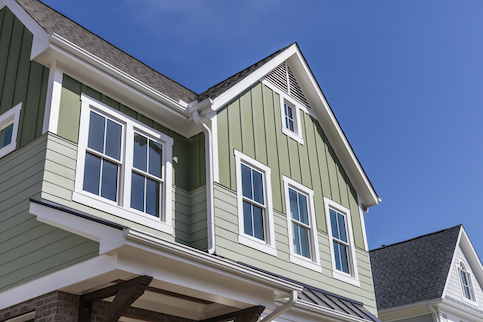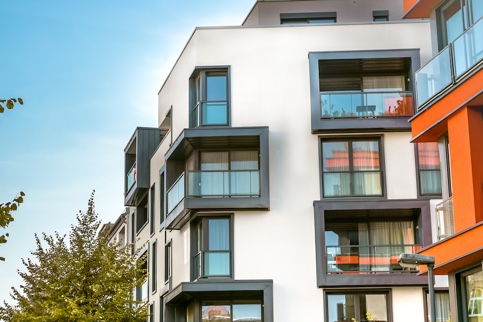Effective Nov. 16, 2025, both Fannie Mae and Freddie Mac no longer require a specific minimum credit score for conventional loan approval. Instead, loan decisions will be based on an analysis of overall credit risk factors.
Real estate is one of the biggest parts of most people’s financial portfolio. However, many times we buy a home either to live there permanently or to have it as a retreat without thinking of its potential to serve us monetarily.
While refinancing your primary home is a common scenario, you can also refinance a second or vacation home for the same reasons. If you’re considering refinancing your second home, here’s what you need to know.
Understanding The Difference Between A Second Home And An Investment Property
The first thing to be aware of is whether you’re dealing with a second home or an investment property. Investment properties are also commonly referred to as rental properties.
A second home is a property that its owner occupies for at least part of the year. This could be for months at a time or on the weekends. As long as you use it primarily for your occupancy, it’s considered a vacation home.
In contrast, an investment property is a home that you own which is occupied by another tenant. Often, people rent these properties out as a source of passive income, but any property you control that’s occupied by someone else can be considered an investment property.
This isn’t to say you can never rent out your vacation home at a time when you won’t be using it, but we’ll cover this in a later section.
How Do You Verify You Have A Second Home And Not A Rental Property?
It’s good to have a general idea of the difference, but where’s the dividing line?
To figure out whether you have a second home or rental property, mortgage investors Fannie Mae and Freddie Mac follow the same guidelines as the IRS. In order to be considered a second home, the owner has to occupy the property for the greater of either:
- 14 days
- 10% of the days in which you would have otherwise rented the property at fair rental value
For example, let’s say you have a second home that you rent out for 150 days a year. In order for the property to be considered a second home rather than a rental property, you must live there for at least 10% of the total amount of time it was rented. In this example, that means you would need to occupy the property for at least 15 days out of the year.
If you prefer to avoid the math, the general rule is that you need to occupy the property for some significant portion of the year if you’re going to also rent it out.
It’s important to know whether you have a second home or investment property because you can deduct mortgage interest on both a primary and second home (subject to certain limits), but not an investment property. Additionally, interest rates may be slightly higher on a rental property.
What Do You Do If You Get Rental Income For A Second Home?
We’ve hinted at the ability to rent out your second home, but can the income from the rental be used to help you qualify for your refinance?
Although you typically wouldn’t have a traditional rental agreement in place because you don’t have long-term tenants for a vacation home, people do commonly rent out their vacation homes on a short-term basis when they’re not using them.
If you list your second home for rental through approved short-term rental platforms such as VRBO or HomeAway, you can use that income to help you qualify for your refinance. In order to do so, you need to provide the following documentation:
- Your most recent year’s signed tax returns with Schedule E included.
- A copy of the payout summary and income report for the most recent 12 months from the rental platform. The income generated must be associated with the vacation home being refinanced.
In order for the income from the second home to be used, you must have rented it for no more than 186 days during any calendar year as reported on your tax return.
The last set of restrictions to mention right now is that in order to use your VRBO or HomeAway income to qualify, you have to leave at least 20% equity in your home on a rate/term refinance and 40% equity in your home on a cash-out refinance.
This won’t help you qualify for your mortgage, but there’s one other tidbit you might find interesting. If you rent out your second home for 14 days or less, the IRS says you don’t need to report the income on a Schedule E. This makes it untaxed money.
On the other hand, if you rent it for more than 15 days and have to report the income, you can also deduct rental expenses from your tax liability.
There’s more information on these and other rental rules in IRS Publication 527. If you have questions on how these guidelines or the mortgage interest deduction mentioned previously apply to your return, we recommend consulting a tax professional or commercially available tax preparation software.
See What You Qualify For
Buy A Home
Discover mortgage options that fit your unique financial needs.

Refinance
Refinance your mortgage to have more money for what matters.
Tap Into Equity
Use your home’s equity and unlock cash to achieve your goals.
Rates For A Second Home Refinance
In general, the rate will be slightly higher on a second home than it will be for your primary property. There’s a reason for this.
Responsible lending is all about risk management. Because a property is your second home, in the event that you do run into financial trouble down the line, the thought is that you’ll sooner walk away from that property than you would from your primary home that you live in the majority of the time.
In return for taking on the increased risk, a lender will typically charge you a higher rate on a mortgage for a vacation property.
What Paperwork Do You Need To Qualify?
In many respects, the paperwork you need to use in qualifying for a refinance on your vacation home is no different than what you would need to qualify for a mortgage on your primary home. We recommend:
- Your two most recent years of federal tax returns. These should include Schedule E if using rental income.
- W-2s going back 2 years, along with your recent pay stubs.
- The lender will need any 1099s you may have. If you’re self-employed, include your profit and loss statements.
- If you’re using alimony and/or child support payments to qualify, you’ll need proof of at least 6 months of regular payments prior to the application and evidence that the payments will continue for at least the next 3 years. This can be obtained from your divorce documentation or other legal paperwork.
You’ll also need account statements for bank accounts and any other assets that you want to use to qualify. Plan to provide statements going back at least 2 months or the most recent quarterly statement. If you’re selling any assets or getting any gift funds, these need to be documented as well.
We’ll walk you through this process, but here’s more information on refinance documentation so you can begin to prepare.
Loan-To-Value Limits On A Second Home Refinance
When you talk to lenders, you may sometimes hear them discuss something called a loan-to-value ratio (LTV). You can think of LTV as being the inverse of your existing equity in a refinance situation. For example, if you’re leaving 20% equity in your home after a refinance, the LTV on the loan is 80%.
When looking to refinance, there are restrictions on how high your LTV can go, meaning you need to leave a certain amount of equity in the property. The maximum LTV will be slightly lower on a second home than it would on a primary property in order to mitigate risk.
On a primary property, in order to do a rate/term refinance, the maximum LTV depending on loan type could be as high as 97%, meaning you would only need 3% equity. In contrast, for a rate-term refinance on a second home, you need at least 10% equity or 90% LTV. If you want to take cash out of a primary property, the maximum LTV on a primary home is 80% compared to 75% on a second home, with 20% equity vs. 25%.
On an investment property, the maximum LTV for both rate/term and cash-out refinances on one-unit properties is 75%, requiring 25% equity.
As mentioned above, if you’re using rental income to help qualify for your second home refinance, you’ll need at least 20% equity, which translates to 80% LTV. If you’re doing a cash-out transaction with rental income, you’ll need to keep 40% equity in the home, meaning your LTV can be no higher than 60%.
Credit Requirements For A Second Home Refinance
If you’re looking to refinance a mortgage for your second home, these are typically offered as conventional loans through Fannie Mae or Freddie Mac. This means that at minimum your median FICO® Score should be at least 620 or higher. It’s important to note that along with a higher amount of equity left in the home, a higher credit score is one of the things that contributes positively to getting favorable rates on your refinance.
Debt-To-Income Ratio For A Second Home
Another key factor to pay attention to is your debt-to-income ratio (DTI). As a refresher, this is a comparison of your monthly debt payments for both revolving accounts and installment loans to your monthly income. In order to give yourself the most possible qualification options, we recommend your DTI including all house payments be no higher than 43%.
Cash Reserves For A Second Home Refinance
Another thing you might hear your lender talk about is reserves. This term refers to the number of months you would be able to make your mortgage payment if you lost your job or had another event that negatively impacted your finances. When calculating reserves, there are five factors that are taken into account and they can be remembered with the acronym PITIA:
- Principal: This is the amount of your monthly mortgage payment that goes toward paying down the balance of your loan. When you’re closer to the beginning of your term than the end, this will be smaller than your interest charge. Later in the term, things flip.
- Interest: This is the premium the lender or mortgage investor gets for making the loan in addition to the principal payment.
- Taxes: These are the property taxes paid every month. These are often split up into 12 equal monthly payments which are put into an escrow account, though an escrow account is not always required.
- Insurance: Your annual homeowners insurance premium is often split into monthly increments and put in escrow as well.
- Association dues: If you live under a homeowners association, your monthly dues are included for qualification purposes even if this payment is made separately from your monthly mortgage payment.
The amount of reserves needed will depend on qualifying factors as well as the investor in your mortgage, but if you’re qualifying with VRBO/HomeAway rental income, you’ll need at least 2 months of reserves. It’s a good idea to plan for having to show at least this amount within your available assets.
Cash-Out Refinance For A Second Home
A cash-out refinance is a type of mortgage refinance that allows a borrower to take advantage of the equity in their home. If you’re looking to refinance a second home, you may be wondering if a cash-out refinance is an option for you. The short answer to this question is yes. You have the ability to take cash out and utilize your home’s value to match up with your personal financial goals, but when is this a good option?
When Does Taking Cash Out Of Your Second Home Make Sense?
Two of the most common scenarios for taking cash out of your second home are when you want to remodel it or possibly consolidate debt or make another investment.
Doing a remodel could allow you to put a sunporch on your Florida home or put in a dock for the boat, for example. When it comes to remodeling, you’re really only limited by budget and imagination.
Regardless of your reason for refinancing, be sure you can retain enough equity that you’ll be able to accomplish your goals by refinancing. Remember, at minimum you’ll have to leave 25% equity in the home in order to complete the transaction when taking cash out.
Although not as common, another reason to refinance your second home might be to consolidate debt or use the cash for another financial opportunity. Although you would get a better rate by doing this using your primary home, some people may prefer this if they don’t want to touch the existing equity in their main home.
The Bottom Line
Refinancing a second home is possible, but there are many considerations you should make first. In addition to making sure you’ll qualify for a refinance, you should also make sure that it’s the right financial move for you to make. Are you looking to refinance your vacation property?
View Your Refinancing Options
See recommended refinance options and customize them to fit your budget.

Victoria Araj
Victoria Araj is a Staff Writer for Rocket Companies who has held roles in mortgage banking, public relations and more in her 15-plus years of experience. She has a bachelor’s degree in journalism with an emphasis in political science from Michigan State University, and a master’s degree in public administration from the University of Michigan.












